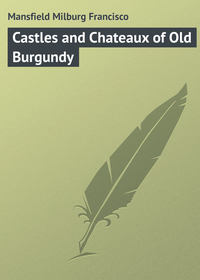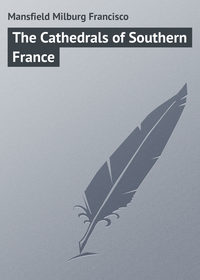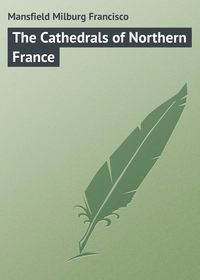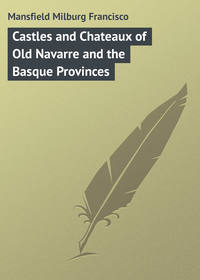 полная версия
полная версияRomantic Ireland. Volume 2/2
The present cathedral was entirely rebuilt in the seventeenth century, and has no architectural importance. Close by, on a knoll, about which the village is built, is a round tower, eighty-four feet high and fifty-one feet in circumference.
“At Kilcummin, on the west side of Killala Bay, a body of French troops, under General Humbert, landed, August 22, 1798, with the object of supporting the United Irishmen. They at once took Killala and Ballina, and at Castlebar the government levies were in such haste to retire without fighting as to give rise to the nickname, ‘Castlebar Races.’”
Ballina, at the head of Killala Bay, is the “tourist resort” of the region. It is pleasant and delightful in all of its aspects, and in its neighbourhood are some very interesting architectural remains. There are, as is often the case, a Roman Catholic and a Protestant cathedral in the town, and an Augustinian monastery, a ruin of a fifteenth-century structure, also many attractive vistas and spots most worthy of the brush and pencil of the artist.
These attractions pall in the mind of the local spreader of publicity, who extols only the size and varieties of fish which may be taken in the river Moy and other near-by waters.
From Ballina one reaches Sligo in five and a half hours by means of that still prevalent institution, the genuine Irish “low-backed car.”
Somewhere in the county of Sligo is the “Valley of the Black Pig,” which is possessed of a legend which recounts how, for generations, the Irish peasantry have comforted themselves in adversity by the memory of a great battle fought here in this valley.
W. B. Yeats tells how, a few years ago, in the barony of Lisadell in Sligo, a peasant would fall to the ground in a trance as it were, and rave out a description of the bloody battle which once took place.
This shows, at least, that tradition and legend alike die hard in the minds of the people, and when Mr. Yeats tells us that men have told him that they have seen the girths instantaneously rot and fall from horses; and that few, if any, who enter the Black Valley ever come out alive, we realize fully how close we are, even in these times, to the age of superstition in Ireland.
Mr. Yeats furthermore eulogized the incident in verse.
“The dew drops slowly; the dreams gather; unknown spearsSuddenly hurtle before my dream-awakened eyes;And then the clash of fallen horsemen, and the criesOf unknown perishing armies beat about my ears.We, who are labouring by the cromlech on the shore,The gray cairn on the hill, when day sinks drowned in dew,Being weary of the world’s empires, bow down to you,Master of the still stars, and of the flaming door.”Sligo itself, with its ten thousand souls and its important and matter-of-fact seafaring trades, is a centre for journeying afoot or awheel amid many charming scenes of lough and lake and sea and shore.
Southward is Carrick on Shannon, the gateway to the Shannon’s lakes and rivers; northward is the Bay of Donegal, backed by its famous rugged “Highlands;” and, eastward, is Lough Erne, which, with its upper and lower lakes and the river Erne trickling minutely southward, is quite the rival of the long-drawn-out Shannon, or would be if the tide of popular fancy ever turned that way. Enniskillen is the metropolis of Lough Erne. Locally it is known as the Island City by reason of its being apparently surrounded by the all-enfolding waters of the upper and lower lakes. Its fame lies principally in its entrancing situation, and the memory of its various regiments of Enniskillen Dragoons who have fought and won gloriously in many of England’s “little wars,” and big ones, too, for that matter. The colours borne by the two Enniskillen regiments at Waterloo are still preserved in the parish church.
Until the days of James I., Enniskillen was no more than a stronghold of the Maguires, but it then gained much prominence through the eventful part it played in the domestic struggles and troubles of the latter half of the seventeenth century. Of the old castle, which has braved so many fights, only a small portion remains, and is incorporated in the modern military barracks, which, in one way, indicate the importance of Enniskillen.
“The Falls of Erne,” at Ballyshannon, where the river joins its estuary with its rapid, tumbling torrent falling over a thirty-foot wall of rock, indicate in no unmistakable manner the volume of water which flows from source to sea. At Ballyshannon, which has more than a local renown among disciples of Izaak Walton, is the famous “salmon leap” which, at certain seasons, provides a display of the wonderful acrobatic ability of this gamy fish. But a short three miles from Ballyshannon is Belleek, with its famous china factories which produce a peculiarly lustrous egg-shell ware much admired for its simplicity and crudeness of form, but very transparent and light. Here, too, are another series of rapids, as great in their way as those farther down-stream. Sir Joseph Paxton called them “the most picturesque in the world,” but one should judge for himself. They are marvellously effective, however, for the river falls nearly 150 feet in three miles or less.
Sligo itself, in spite of its commercial importance, is not greatly appealing in its interest, if one excepts its old abbey, now a ruin, but once an exceedingly ambitious Dominican establishment. Founded in 1252, it was destroyed by a fire in 1414, though immediately rebuilt. Its Gothic is of that superlative quality known best in the superb monkish erections of the Continent of Europe. There are various monuments yet to be seen therein of local and historical interest, but the chief attraction is what remains of the beautiful cloister, fairly perfect as to preservation, and surrounding three sides of a rectangle. There are forty-six arches, each about four feet and a half in height, all elaborately carved, and quite different one from another.
By an ancient and inalienable right, the abbey grounds are still used as a Roman Catholic burial-place.
CHAPTER VIII
THE DONEGAL HIGHLANDS
THE Bay of Donegal, and indeed the whole Donegal district, is mellowed and tempered by the everflowing Gulf Stream, which, so the scientists say, were it diverted by any terrestrial disturbance, would give to the entire British Isles the temperature and climate of Labrador. As this event is hardly likely to take place, and certainly cannot be foretold, the interest in the subject must rank with that which one takes in the announcement of the statisticians, for instance, that an express-train travelling at sixty miles an hour would take millions of years to reach Saturn, were it once headed in that direction and had the elevating and sustaining qualities of an air-ship.
Certainly, the mean temperature of the whole south and west coast of Ireland is marvellously mild, and that of Donegal is exceptionally so.
The cliffs of Slieve League, which form a jagged, many-coloured precipice, rise at a sharp angle from the northern shore of Donegal Bay to the summit of the storm and wave-riven mountain, a rock wall 1,972 feet high. It is a grand and noble headland, as a glance at the map will show, and is one of the most lofty elevations seen from Bundoran and the southern shores of the bay; moreover it is accounted unique in all the world, by reason of its marvellous colouring.
Bundoran is a bustling, thriving place, but of the tourist order pur sang, with golf-links, electric lights, and up-to-date hotels, and, for that reason, if for no other, is a place for the genuine lover of the road to avoid.
Donegal itself is an improvement. It is a small but attractively placed town at the head of its own bay, and, in spite of its being a coast town, it is more allied with agricultural interests than with trade by sea.
The guide-books tell one little of Donegal, and so much the better. One enjoys finding out things for oneself, and so one has practically a virgin field at Donegal unless he will delve deep into frowsy historical works, such as the “Annals” of the “Four Masters” of the old Abbey of Donegal. The retreat where they patched and pieced together this ancient record is no more, but it stood, “proud, grand, and rich” upon the site still marked by some ruinous heaps of stones.
Donegal has the usual accompaniment of a castle, but, in this case, it is a sixteenth-century descendant of a former stronghold. It is a fine Jacobean building, built up out of the remnants of its parent, and, with its tall gabled towers and turrets, is in every way a satisfactory example of a mediæval baronial residence, though differing in many essentials from those common throughout Ireland.
Killybegs, between Donegal and Slieve League, on the north shore of the bay, is one of those picturesque coast villages on a landlocked tiny bay, of which so many examples exist in the British Islands. It is no more attractive, nor any less so, than others, but it has this distinction – a lengthy sojourn there will demonstrate beyond all doubt that one can live far away from a great city and yet never miss its whilom attractions.
With many other places similarly situated, a run “up to town” is inevitable and necessary; here, one is apparently as completely isolated from the distractions of the great world outside as if he were marooned on a desert isle, with the advantage, however, of being able to get away at once by means of what, to all appearances, is a toy railway running to Donegal.
Carrick is another village a little further on and similarly isolated, – more so, if anything, in that the diminutive engine and its toy carriages stop, in its not rapid course, at Killybegs, and one journeys onward by “car.”
To the southward are the heights of Slieve League, Malin Beg and Teelin Head, and, if one will brave the waves to the extent of rounding these headlands by boat, he will then experience something of the feeling which inspired the following lines, which, if rather pretentious, are in no way fulsome:
“Once seen in morning sunshine, the view of the southern face of Slieve League, rising steeply from the sea, can never be forgotten; the impressiveness and matchless colouring of the rock defy description; its beauty must be seen to be believed. Its glorious colours are grouped in masses on the mountain’s face: stains of metal, green, amber, gold, yellow, white, red, and every variety of shade are observed, particularly when seen under a bright sun, contrasting in a wonderful manner with the dark blue waters beneath.”
Some one has compared these variegated cliffs to the effects to be seen, elsewhere, only in the Yellowstone Park and the canyons of Arizona or Colorado. Those who know Bierstadt or Moran’s paintings of these wonders of nature, or, better yet, the originals themselves, will appreciate the comparison.
The festival of St. Adamnan, eighth in descent from the great King Nial and from Conal, the ancestor of St. Columbkille, is kept with great solemnity in many churches in Ireland, of which he is titular patron, and in the whole diocese of Raphoe, in the county of Donegal, of which he was a native. The abbatial church of Raphoe was changed into a cathedral soon after, when St. Eunan was consecrated the first bishop. He originally entered the monastery founded by St. Columba, and became its fifth abbot. In 701 he was appointed ambassador to King Alfred of the Northern Saxons, to demand reparation for the injuries committed upon Irish subjects in Neath. It was St. Adamnan who first prevailed upon the Church authorities in Ireland to celebrate Easter at the true and appointed time.
When he died, he left among his effects a treatise on the right time of keeping Easter, which disposed his people sometime after to forsake their erroneous computation. He wrote, too, the life of St. Columbkille, and also certain canons, and a curious description of the Holy Land as that country stood in his time. This book furnished the Venerable Bede with his principal memorials.
In this work on the Holy Land, St. Adamnan mentions the tombs of St. Simeon and of St. Joseph at Jerusalem, and many relics of the passion of Christ, as well as the impression of the feet of the Saviour on Mount Olivet, covered with a church of a round figure, with a hole open on the top, over the impression of the footsteps. He also mentions grasshoppers in the deserts of the Jordan, which the common people eat, boiled with oil; and a portion of the Cross in the Rotunda Church in Constantinople, which was exposed on a golden altar on the three last days of Holy Week, when the emperor, court, army, clergy, and others went to the church at different hours, to kiss that sacred wood.
Two landmarks, known to all travellers to the Clyde from America, by way of the north of Ireland, are The Bloody Foreland and Tory Island.
The guide-books tell but little concerning this wild land of promontory and cliff, and with some reason, too, for there is little or no population there, except the fisherfolk and a rather primitive race of agriculturists.
Donegal is assuredly a land of intermittent beauty, and the hill-encircled loughs and the verdant glens of Donegal Bay give way here to a stern, relentless gray stone formation, with here and there patches of green and purple which indicate nothing so much as the lonesomeness which is inevitable under such conditions. But there is an impressiveness in it all which is inexplicable, since the scenery, though by no means tame, is not of the grandeur of many other parts.
It is doubtful if Tory Island – which is but a mere name, even to the few who know it at all – will ever be inundated by any large flow of travel. If it was, there would doubtless be little accommodation provided for them, for the simple reason that it does not exist, though the island is possessed of a population of some hundreds of men and women and children, with schools and a church – in fact two, which are ever a point of contention and argument among their respective constituencies. It was not long since that the cleric in charge of one of these houses of God nearly starved, because he would not desert his post, and “the powers that be” on the mainland had evidently abandoned him to his fate, or had forgotten him altogether.
Between the Tory Island and Malin Head, that other beacon-light for seafarers, is the great inlet or fiord of Lough Swilly, meaning in Celtic “Lake of Shadows,” which, though quite as beautiful as Lough Foyle, its neighbour on the east, is, for some unexplained reason, quite neglected. Of Lough Foyle, at the head of whose ample waters sits that city familiarly called Derry, – built by certain citizens of London in the reign of James I., – Sir Walter Scott has said:
“Nothing can be more favourable than this specimen of Ireland – a beautiful variety of cultivated slopes, intermixed with banks of wood; rocks skirted with a distant ridge of healthy hills, watered by various brooks; the glens or banks being in general planted or covered with copse.”
This is not a particularly vivid statement, to be sure, but it is true and temperate, and far more likely to fit in with the views of the casual observer than the rather florid word-paintings of other parts of Ireland which have been offered by rhapsodists of all shades of opinion.
CHAPTER IX
LONDONDERRY AND THE GIANT’S CAUSEWAY
LONDONDERRY was the original site of an abbey for the canons of the Augustinian order founded by St. Columbkille in 546. There was also an abbey for Cistercian nuns founded in 1218, and a Dominican friary founded in 1274, “by request of St. Dominick,” as the chronicles put it, whatever significance that statement may have.
Derry, as it is commonly called, owes its name to the confiscation of the estates of the O’Neills in 1609, most of the lands being bestowed on various citizens of London. Derry, the ancient name, means “the place of oaks.” All this part of Ulster was once heavily forested, but it is now conspicuously bare. Nearly 160,000 acres of the county are still owned by the Irish Society, while two London livery companies, the Skinners’ and the Drapers’, are also owners of large holdings.
Derry is usually described as “a prettily situated town, built upon a high hill.” It is quite in keeping with the description, and is also a place of much interest, as will be found upon a close acquaintance, though it is unquestionably a curious mixture of old and new, of foundries, distilleries, and manufactories, which, at every turn, are contrasted with a celebrity and an interest quite of the past.
Londonderry was formerly fortified, contrary to the usual Irish conception of military science and architecture, which favoured the method advanced in the Spartan proverb, “The city is best environed which has walls of men instead of brick.”
There were originally four gates (afterward six) piercing the city walls, Bishops Gate, Ships Quay Gate, New Gate, and Ferry Gate.
The Cathedral of Derry is a plain Gothic structure far inferior in rank and splendour to those of its class in other lands, and dates only from the early seventeenth century. The episcopal palace occupies the site of St. Columbkille’s abbey.
The chief event in Derry’s history, and one which is called to the visitor’s attention at every turning-point and stopping-place, was the siege so graphically described by Macaulay.
In brief, the event took place thus:
“A letter was sent to the Earl of Mount Alexander at Cumber in County Down on December 3, 1688, giving the information that six days later certain numbers throughout Ireland, in pursuance of an oath which they had taken, were to rise and massacre the Protestants, men, women, and children. This letter furthermore warned the earl to take particular care of himself, as a captain’s commission would be the reward of the man who would murder him.”
The information reached Derry too late to secure the safety of the city. The terrified Protestants were filled with doubt as to what measures of precaution should be taken. Two companies of the Irish appeared on the opposite bank of the stream, and the officers were ferried over to make proposals for entering the town, which was nearly betrayed into their hands by the treachery of the deputy mayor, who was inclined to favour King James II. Impatient for the return of their officers, the soldiers crossed the river, and came to within three hundred yards of the Ferry Gate.
“The young men of the city observing this,” says Gordon’s “History of Ireland,” “about eight or nine of them, whose names deserve to be preserved in letters of gold, viz., Henry Campsie, William Crookshanks, Robert Sherrard, Alexander Irwin, James Steward, Robert Morrison, Alexander Coningham, Samuel Hunt, with James Spike, John Coningham, William Cairns, Samuel Harvey, and some others who soon joined them, ran to the main-guard, seized the keys, after a slight opposition, came to the Ferry Gate, drew up the bridge, and locked the gate just as Lord Antrim’s soldiers had advanced within sixty yards of it.”
The siege lasted one hundred and five days, during which time the townspeople were reduced to the direst extremities. “Reduced,” writes the historian, “to the extremity of distress, and endeavouring to support the remains of life by such miserable food as the flesh of dogs and vermin, even tallow and hides, nor able to find more than two days’ provisions of such substances, the garrison was still assured by the harangues of Walker, in a prophetic spirit, that God would relieve them; and men reduced almost to shadows made desperate sallies, but were unable to pursue their advantage.” The besiegers had thrown a boom across the river to prevent all navigation, and Kirk, the Orange admiral, had already been deterred by it from attempting the relief of the town. At length two provision ships and a frigate drew near to the city. One ship “dashed with giant strength against the barrier, and grounded, though subsequently floated out into deep water.”
Nearly twenty-five hundred citizens died of famine or at the hands of the enemy during the siege.
Near Londonderry is the Grianan of Aillach, upon which are the remains of what is thought to have been an ancient royal residence which, in splendour and importance, must have ranked high among the ancient palaces of the Irish kings.
By some, however, it has been asserted that this remarkable work, of which, to be sure, only fragmentary ruins remain, was a former temple dedicated to the worship of the sun. At any rate, it was evidently a splendid and imposing structure.
Its present appearance is that of a truncated cairn of extraordinary dimensions, which, on closer inspection, proves to be a building constructed with every attention to masonic regularity, both in design and workmanship. A circular wall, of considerable thickness, encloses an area of eighty-two feet in diameter. Judging from the numbers of stones which have fallen off on every side, so as to form, in fact, a sloping glacis of ten or twelve feet broad all around it, this wall must have been of considerable height, probably from ten to twelve feet; but its thickness varies, that portion of it extending from north to south, and embracing the western half of the circle, being but ten or eleven feet, whereas, in the corresponding, or eastern half, the thickness increases to sixteen or seventeen, particularly at the entrance.
One of the inevitable illustrations of the old-time school geographies of our youth was a representation of the “Giant’s Causeway,” with its queer, hassocklike, basaltic stones, built in fantastic forms, like the structures children themselves are wont to erect from their building-blocks.
Next in order come the books of pictorial travel and “table books” of the “wonders of the world,” where the same picture appears again; and, finally, the astute proprietors of ardent spirit which is distilled at Bushmills, – an ancient town of perhaps a thousand inhabitants, between Portrush, Coleraine, and the basalt-bound coast of Northern Ireland, – have covered walls and fences with quite the most pleasing and alluring of all the pictorial representations of this unique rocky formation.
By these various means, the aspect of “The Giant’s Causeway” has become familiar to all. So, too, most people are familiar with the chief characteristics; for which reason it is useless to repeat them in detail here.
It was in the last years of the seventeenth century that this wonderland of nature first attracted the attention of the inquisitive, and from that time on its peculiarities have drawn many thousands of visitors of all ranks, from the mere pleasure and sensation loving tourist of convention to the profound scientist and antiquarian.
The five and six-sided basalt rocks are piled perpendicularly one upon the other, in contrast to most rocky formations, which lie on their sides, and the varying heights of the columns form those significantly named groups known as the “Organ and Pipes,” “Samson’s Ribs,” and the three “Causeways,” the chief of which gives its name to the group.
By those who have delved into the subject, armed with a profound geological knowledge, plummet and line, and rule and level, we are informed that “There is only one triangular pillar throughout the whole extent of the three Causeways. It stands near the east side of the Grand Causeway. There are but three pillars of nine sides; one of them situated in the Honeycomb, and the others not far from the triangular pillar just noticed. The total number having four and eight sides bears but a small proportion to the entire mass of pillars, of which it may be safely computed that ninety-nine out of one hundred have either five, six, or seven sides.”
For a further description, which shall be brief and to the point, we have the remarks of Köhl, the antiquarian who devoted so much of his energy to a study of Ireland’s peculiar and rare beauties.
He says: “With all the explanations that can be offered with respect to the origin of this phenomena, so much is left unexplained that they answer very little purpose. On a close investigation of these wonderful formations, so many questions arise that one scarcely ventures to utter them. With inquiries of this nature, perhaps not the least gain is the knowledge of how much lies beyond the limits of our inquiries, and how many things that lie so plainly before our eyes, which we can see and handle, may yet be wrapped in unfathomable mystery. We see in the Giant’s Causeway the most certain and obvious effects produced by the operation of active and powerful forces which entirely escape our scrutiny. We walk over the heads of some forty thousand columns (for this number has been counted by some curious and leisurely persons), all beautifully cut and polished, formed of such neat pieces, so exactly fitted to each other, and so cleverly supported, that we might fancy we had before us the work of ingenious human artificers; and yet what we behold is the result of the immutable laws of nature, acting without any apparent object, and by a process which must remain a mystery for ever to our understanding. Even the simplest inquiries it is often impossible to answer; such, for instance, as how far these colonnades run out beneath the sea, and how far into the land, which throws over them a veil as impenetrable as that of the ocean.”











